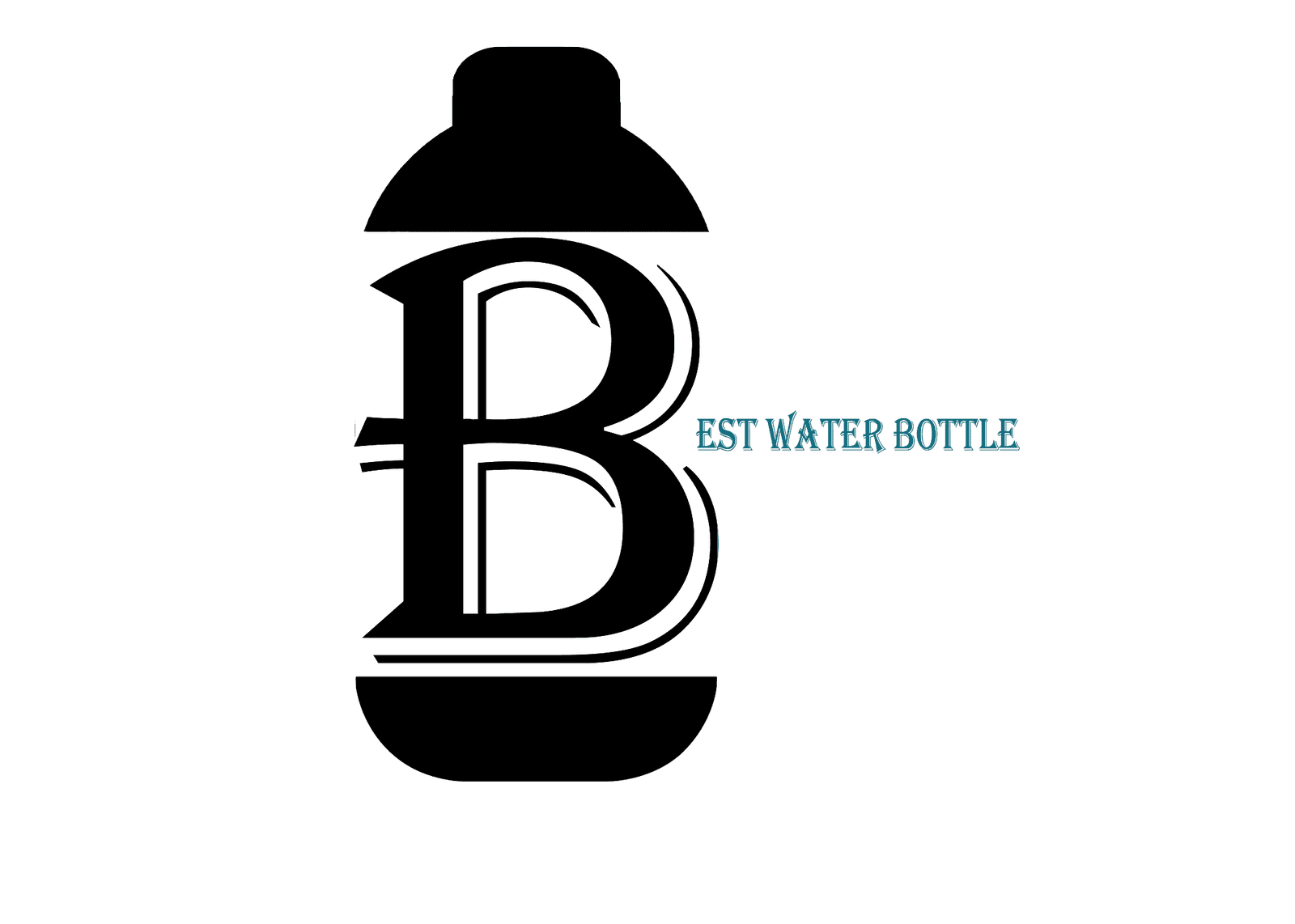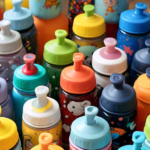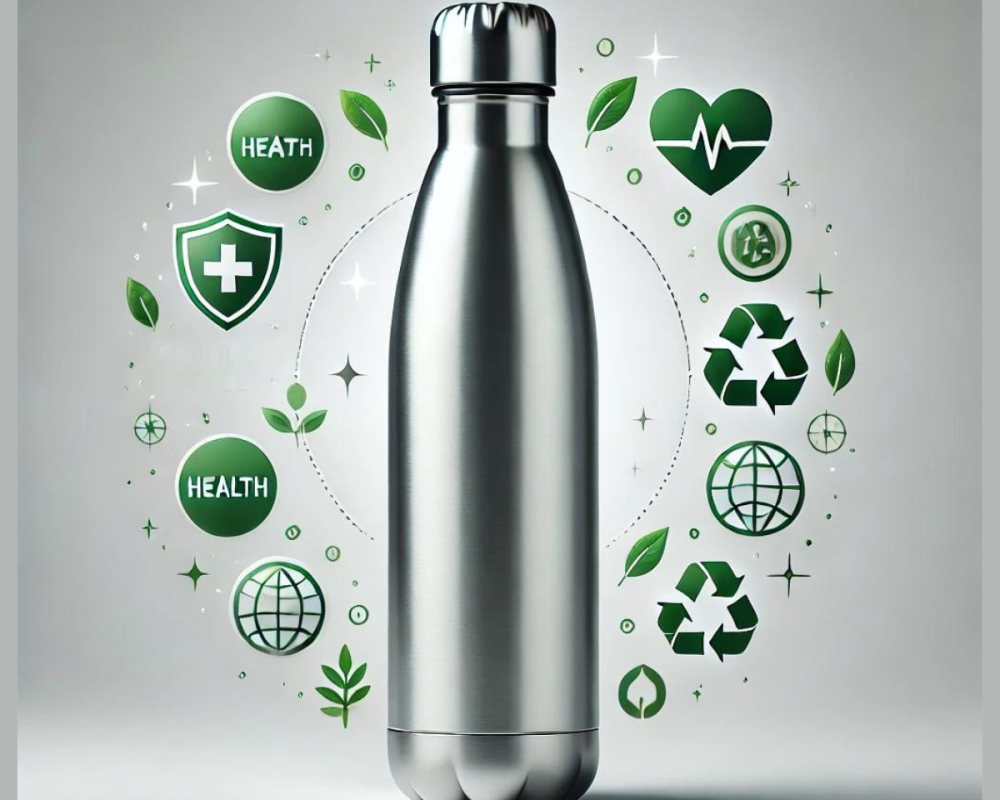
The Ultimate Truth: Are Stainless Steel Water Bottles Safe for Daily Use?
One of the trends most widely used lately is the stainless steel water bottle. Truly, it is very tough, sustainable, and stylishly designed; however, people usually ask whether the stainless steel bottles used in daily activities are safe. Potentially, there have been many health risks said to result from stainless steel, but mostly unfounded when the bottles are of good quality and properly maintained.
Stainless steel is an alloy of metals known for strength, resistance to rust, and unreactive properties. It appears widely used in food and beverage production because it’s safe for that use and clean. If used for water bottles, the suitability of stainless steel is important because it will never leach chemical poisons to the water, unlike some alternatives of plastic.
One of the biggest concerns of having stainless steel water bottles is the growth of bacteria. However, that is only very minimal if and only if this bottle is regularly cleaned and purify. Unlike plastic bottles, once they acquire liquid, they easily encourage the breeding and growth of the bacteria; thus it is not a safe place to store water or beverages.
Stainless steel water bottles have forever changed the lives of many people look about for unbreakable, eco-friendly, and healthy beverage solutions. These are stainless steel bottles; what is it that is safe to consume again and again?
Stainless steel is an alloy of metal that primarily consists of iron plus chromium. Through these chromium contents, stainless steel holds several important properties like corrosion resistance, rust resistance, and stain resistance. This has made stainless steel suitable in water bottle applications so that pure water is always supplied.
Unlike plastic bottles, which react with water and let a lot of chemicals leach out, stainless steel has no reaction at all, and no toxin ever leaks out. This is particularly good for health-conscious people considering the damages plastics pose to users of plastic water bottles. Additionally, stainless steel is recyclable, hence very friendly to the environment and way much less destructive than one-time usage plastic bottles.
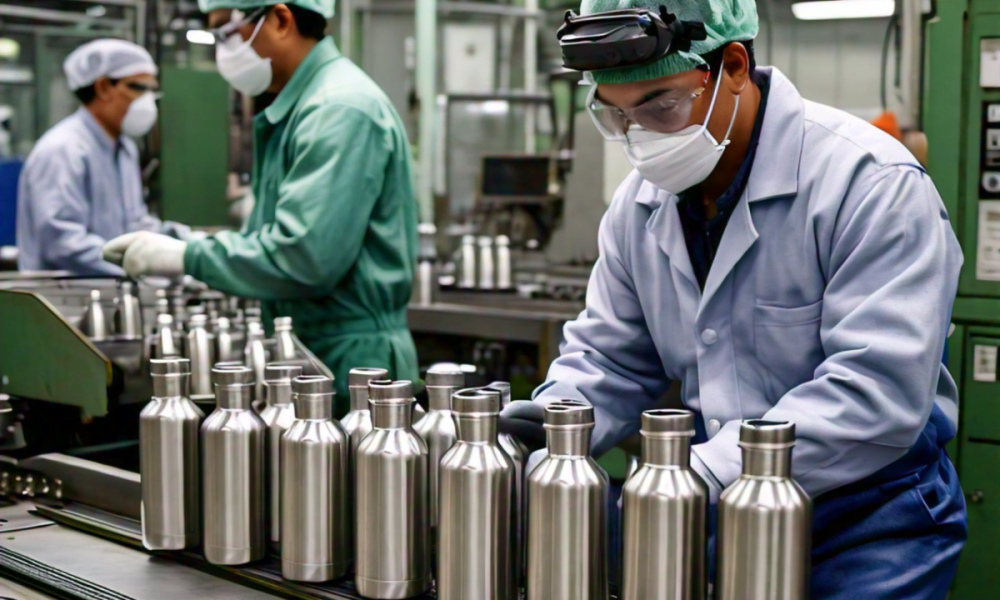
The safety of stainless steel water bottles depends on the manufacturing method used. In fact, the quality of stainless steel matters, but it’s equally important to be able to discuss how manufacturing methods and material selections affect the safety of a specific product.
Production in stainless steel water bottles involves most of these steps. first of all, it includes the melting of the stainless steel and then casting it in sheet or coil forms. The cutting, forming, and shaping phases are then performed to come up with the desired bottle shape. The bottle might experience a process that creates extra strength and enhances aesthetic value through polishing, engraving, and powder coating.
The safety of stainless steel water bottles lies in its method of manufacture. Indeed, the quality of stainless steel is a factor, but it is also important to be able to mention how manufacturing techniques and materials effect the overall safety of a particular product.
Another important element of the manufacture is the performance of quality controls. It is usually necessary to perform routine inspections and test water bottles for their safety certification and free from defects. Also, check for sharp edges, surface scratches, or any other defect that may reduce the safety of the bottle.
Overall, the production process of stainless steel water bottles will determine their safety. Clean manufacturing facilities, safe inputs of material, and especially quality control measures would make it possible to produce quite good stainless steel water bottles, which in turn would be generally considered safe for daily use.
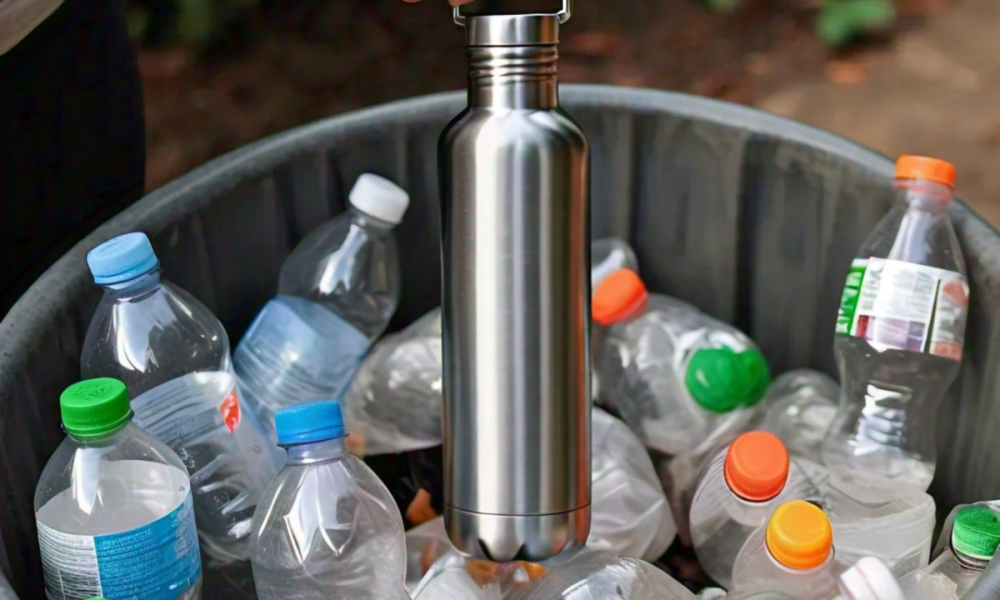
However, what actually makes stainless steel water bottles more sustainable in this setting is that it is safe and durable, benefits of the environment include being much greener than the single-use plastic bottles that usually land up in recycling bins or on the bottom of the ocean.
One of the major environmental advantages of stainless steel water bottles is that they can be used and reused numerous times, whereas plastic bottles people use only once and then dispose of. This has reduced the number of new plastic production without using any additional resources but rather the raw materials needed for its creation.
Stainless steel is also recyclable. At the end of its use in a user’s life, the stainless steel water bottle can be recycled to become part of a freshly produced item. It thereby helps avoid money waste that ends up in dumping grounds and saves resources.
Choosing a stainless steel water bottle also ensures that you minimize the use of plastics, their production, and transportation. Factories producing plastic bottles consume a lot of energy and frequently utilize harmful substances during production. By choosing your reusable stainless steel bottle, you can really reduce carbon emission and play a big role in show an environment-friendly world.
In short, stainless steel water bottles also have so many positive environmental impacts aside from safety and strength they attract in consumers. Choosing a stainless steel bottle helps to prevent plastic waste and saves resources for a better earthy future.
Potential Risks and Precautions
In general, stainless steel water bottles are considered safe for daily usage but require recognition of the potential danger and suitable handling to ensure safety in use.
Absolutely, the dangerous chemicals that may be present in the stainless steel material pose risks. Well-branded high-quality water bottles like 18/8 or 304 stainless steel are mostly safe and non-toxic. That is why one should choose that option as the better investment.
Another point to consider is how bacteria multiply in a water bottle. Stainless steel does not absorb liquids and allows less moisture to quickly store bacteria, but it must be washed frequently. Soaking the bottle with warm, soapy water is enough, and a good rinse is in order after every use. Cleaning agents containing abrasives should be avoided because they could possibly damage the finish on the bottle.
It should not break, crack, or dent the water bottle. However, if you do not find damages that might expose you to impurity, then you should change it.
Also, pay attention to the type of lid that the stainless steel water bottle provides. Some caps may be plastic; this would mean that chemicals from the plastic may seep into your beverage. Of course, it’s wiser to use stainless steel caps or those that contain non-toxic, chemical-free materials.
By following these advisories and getting yourself a good-rated stainless steel bottle, you’ll find your way toward minimizing risks while enjoying all the perks of this healthy, eco-friendly hydration.
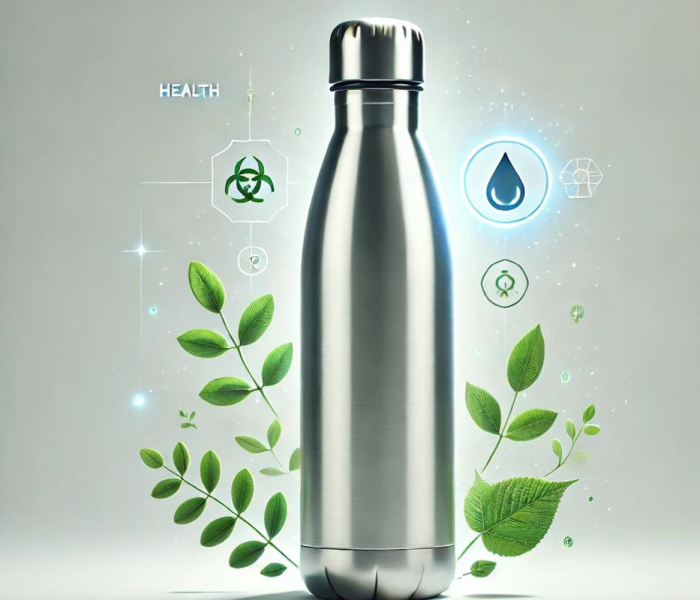
The use of stainless steel water bottles requires one to seriously consider opinions and certificates since many organizations and experts have done research and testing to show that the product has no harmful effects.
The United States Food and Drug Administration approved the use of stainless steel in food and drink containers. This provides a guarantee that there is no safety issue in the use of stainless steel as an element with which to be in contact with food and drinking water. Approval is based on a strict test and evaluation of the material safety.
Several independent testing laboratories tested stainless steel water bottles. They tried to see if the products were safe for human use by testing them. Laboratories inspected harmful chemicals and bacteria, among others, that are contained in these bottles. The results were always positive in such laboratory tests to ensure stainless steel water bottles are safe when clean and in everyday use.
Some stainless steel bottles also are certified by organizations, such as NSF International. NSF is a non-profit organization that develops standards for the health and safety of the public. According to NSF, evaluated and tested products meet some performance and safety criteria.
Honestly, this kind of product shall sell in the marketplace for today’s market has become health-conscious, who are aware of impurities in water and tend to purchase a stainless steel water bottle from an established brand certified by a recognized authority. It is of paramount importance to buy a water bottle that is safe and reliable; therefore, look for recognition and approvals from trustworthy sources.
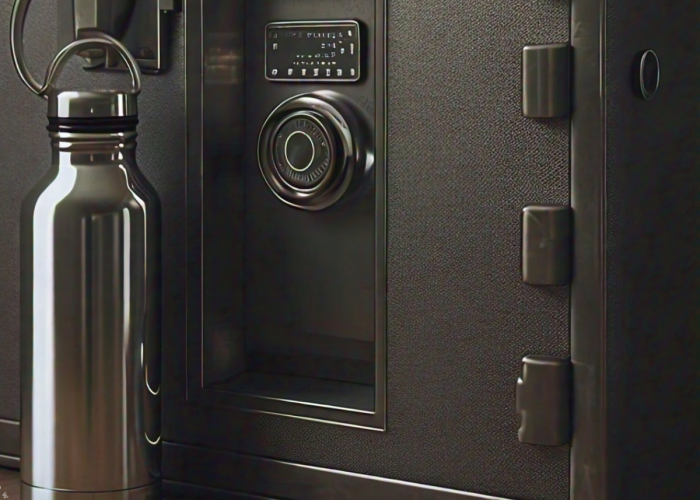
Real life testing and research which has also taken place in the market have also helped in improving the understanding on the safety of the stainless steel water bottles. A lot of analyses have been made to assess the possible harm/benefit profile of such products
Another subject has been development of the theory that bisphenol-A can leach from the internal surface of a stainless steel bottle. Scientific research demonstrates that high quality of 18/8 or 304 material of stainless steel has no toxic substances that could be released into the water. This arises out of the fact that stainless steel is a material that is more of inactive in nature and an ideal material for use in fabrication of good equipment because it will not leak.
Another issue of concern has been the possible impurity by bacteria often associated with the stainless steel water bottles. But three published papers for such studies completed that although the plastic bottle is more convenient to use than the stainless steel bottle, the latter is more compact than the former and therefore it is less responsive to bacterial growth. Additional measures that can be taken to minimize the chances of bacterial formation is by frequently washing them and properly maintaining them.
Real-life testing has also included such an identification of specific substances, like heavy metals or any other undesirable substances in stainless steel water bottles. The following tests have been conducted and its results indicates that the stainless steel water bottles are safe to use every day if made from high quality material and clean.
Overall, field experience and research further substantiate the safety of stainless steel water bottles. All such research has shown that stainless steel is a safe material for use in water bottles and that the potential for bacterial growth and contamination is low given due care.
Conclusion
Thus, it is necessary to conclude that the stainless steel water bottles are safe and environmentally friendly to use every day. These include certification and actual experiences where many of these technologies have been tested safe and effective.
Stainless steel is an agent that is passive in interaction with water and does not release significant quantities of chemicals. It also does not support bacterial growth hence healthier to use compared to plastic bottles. In addition, the material is stainless steel which is durable, reusable and the product is recyclable which makes it environmentally friendly.
There are some issues that people have with stainless steel water bottles in terms of what is maybe dangerous about them, but as a matter of fact, if the water bottles are of good quality and washed times without number, these can be exposing the reality. Purchasing a stainless steel water bottle from a good manufacturer also requires certain care procedures to be taken in order to make the water safe and healthy.
Therefore, stainless steel water bottles are safe, environmental friendly, and long lasting containers suitable for everyday use. When you select a stainless steel bottle, you are very well deciding to be responsible for your health and the health of the planet.
